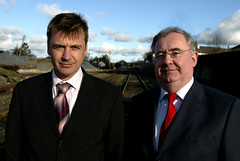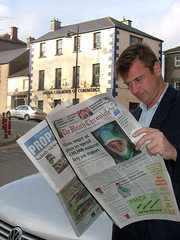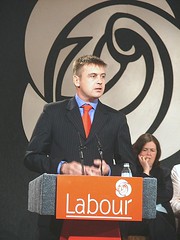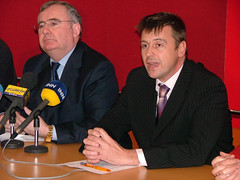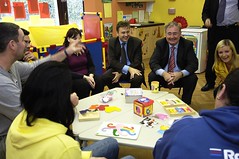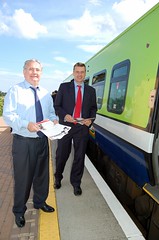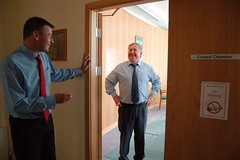Thursday, August 14, 2008
My first appearance on Mongolian TV
I found it hard to sleep much last night. A crowd of Mongolians decided to have a party in the area beneath my window, and they were quite loud. I was surprised that no police came along to move them on. They must have disturbed a few thousand sleepers in the buildings surrounding the square.
The day stated off with a meeting with the Primary Care Director of the Health District. He provided me with an overview of how the system operates. Each of the GP practices lacks equipment such as ECG, ultrasound and blood and urine testing devices.
The meeting was interrupted by a pre-scheduled interview with TV9, the Ulanbataar television station. I was asked the reason why I had come to the city and also questioned about the type of project I was doing. Of course, the interview was in Mongolian so Namjillma my translator will be speaking over my voice when it goes out on the air tonight.
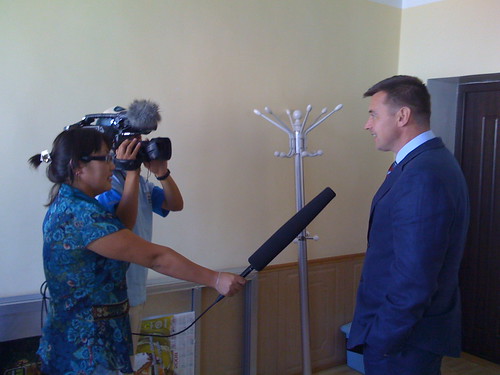
Getting Interviewed by TV9
We went for lunch around the corner from the HQ building. Some of the dish names seemed to have lost something in translation. You could have tried the "Ladies", or the "Horse Meat", or for the adventurous you could go for the "cowboy". There was also a dish called "Wind", which sounded very unappetising. I went for the horse meat, which turned out to be ok.
After lunch we went to visit a General Practice. The Practice covers 1,350 families in a city centre apartment district, which can be seen below.
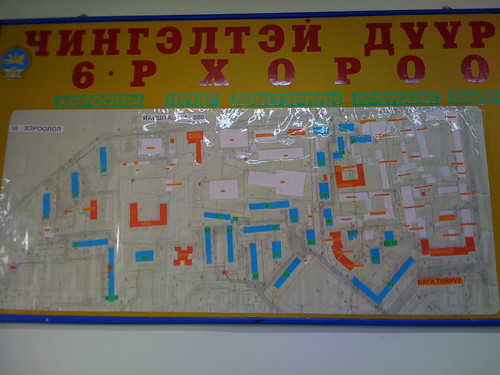
Map showing Chongeltei District
The head of the practice explained how the system operates. A major cause of annoyance for her is the amount of paperwork that has to be completed. Some of this could be removed by introducing a computer system across the health district. But it also requires the removal of some layers of bureaucracy. The Ministry of Health has introduced 17 new procedures or requirements over the last few years but has not increased resources at the same time. For instance, one of the 17 requirements is that the practice has to update the number of females between the ages of 16-49 (referred to as "females of child-bearing age") every year. In the absence of any computerised records this requires them to personally call to every house in the district every year.
The Head of Practice also referred to the lack of basic equipment, such as weighing scales and ink for her printer. I noticed for myself the quality of the workmanship of the builders. The practice building was only 3 yeas old but when they asked me, I guessed 40!
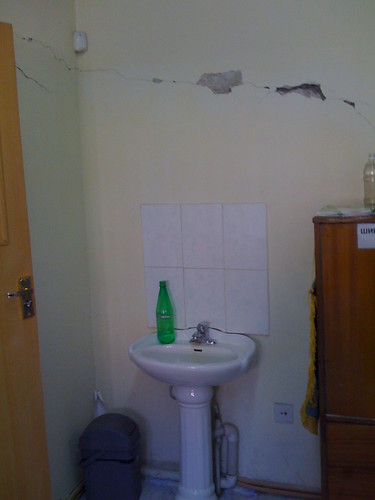
The inside of a GP practice. This building is just 3 years old!
The day stated off with a meeting with the Primary Care Director of the Health District. He provided me with an overview of how the system operates. Each of the GP practices lacks equipment such as ECG, ultrasound and blood and urine testing devices.
The meeting was interrupted by a pre-scheduled interview with TV9, the Ulanbataar television station. I was asked the reason why I had come to the city and also questioned about the type of project I was doing. Of course, the interview was in Mongolian so Namjillma my translator will be speaking over my voice when it goes out on the air tonight.

Getting Interviewed by TV9
We went for lunch around the corner from the HQ building. Some of the dish names seemed to have lost something in translation. You could have tried the "Ladies", or the "Horse Meat", or for the adventurous you could go for the "cowboy". There was also a dish called "Wind", which sounded very unappetising. I went for the horse meat, which turned out to be ok.
After lunch we went to visit a General Practice. The Practice covers 1,350 families in a city centre apartment district, which can be seen below.

Map showing Chongeltei District
The head of the practice explained how the system operates. A major cause of annoyance for her is the amount of paperwork that has to be completed. Some of this could be removed by introducing a computer system across the health district. But it also requires the removal of some layers of bureaucracy. The Ministry of Health has introduced 17 new procedures or requirements over the last few years but has not increased resources at the same time. For instance, one of the 17 requirements is that the practice has to update the number of females between the ages of 16-49 (referred to as "females of child-bearing age") every year. In the absence of any computerised records this requires them to personally call to every house in the district every year.
The Head of Practice also referred to the lack of basic equipment, such as weighing scales and ink for her printer. I noticed for myself the quality of the workmanship of the builders. The practice building was only 3 yeas old but when they asked me, I guessed 40!

The inside of a GP practice. This building is just 3 years old!

